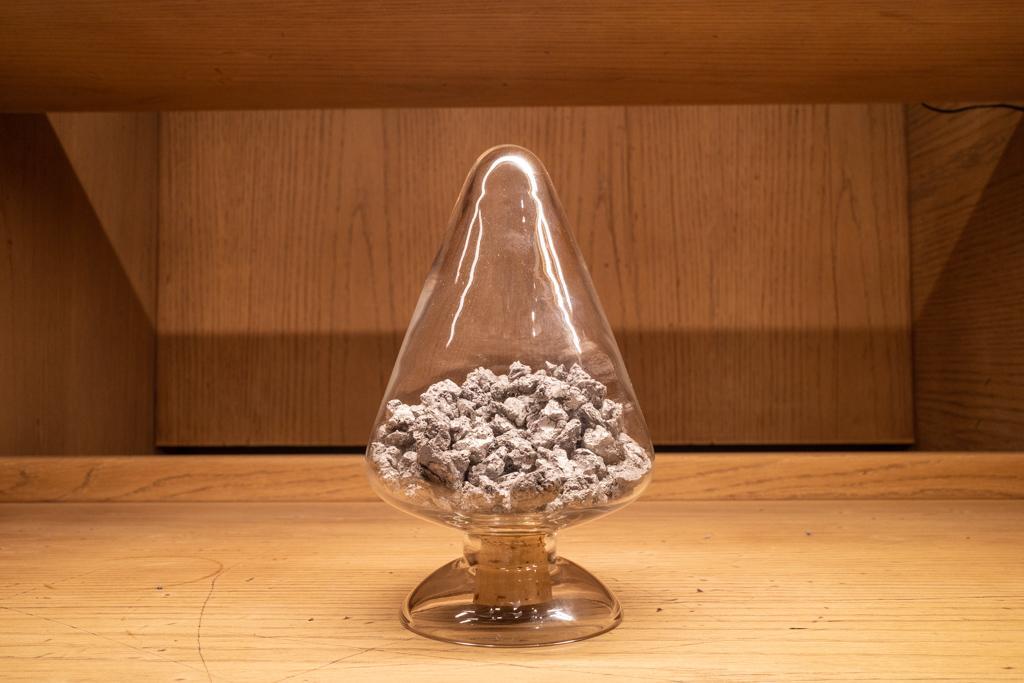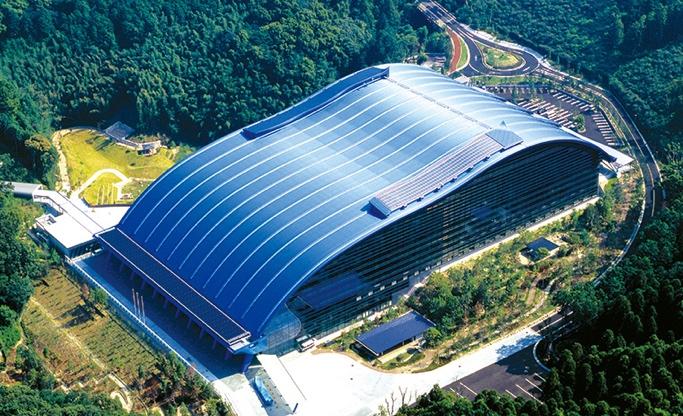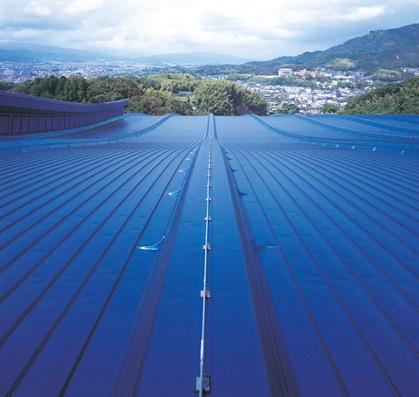PIGMENT TOKYO launched the world's first painting substrate, TranTixxii® designing Titanium Panel with Nippon Steel Corporation, which pursues the world's finest technology and manufacturing.
Color Titanium Panels
Although this titanium sheet is produced using the world's most advanced technologies, some of you may wonder, "What is titanium exactly?". Therefore, to introduce more about titanium, I’ve visited the headquarters of Nippon Steel Corporation in Tokyo to make a preliminary for the factory visit that I’ve been planning.
This time, Mr. Tetsuya Maiyama, General Manager, Head of Department Architecture& Construction Materials Marketing Dept. Titanium Marketing Div. Titanium Unit of Nippon Steel Corporation, explained the various secrets of titanium.
(Interviewed in February, 2020)

He gave me a detailed explanation of the basics of titanium.
—To begin with, what is titanium?
Titanium is a strong, rust-resistant, and lightweight metal used for many purposes such as aerospace fields, chemical plants, electric power plants, automobiles, and construction due to its excellent properties.
It has been in industrial production for about 70 years and is sometimes called "young metal" because of its short history compared to other metals such as copper, iron, and aluminum.
—Certainly, it was assumed to be made with the latest technology.
Although you will see in the factory later, titanium requires massive amounts of electricity in its manufacturing process. In other words, people started to develop this metal after gaining the technology to control a large amount of electricity, which was in 1947 after the war.

Titanium Sand (Titanium Dioxide, also known as Titanium Oxide), the primary material for titanium production.

When titanium is extracted from the minerals using a large amount of electricity, it becomes a titanium sponge and......

ships as a pellet. However, from here, there’s still a long process to become titanium that comes with bright colors.
–Are the primary materials also very rare or limited?
However, because of its strong bond with oxidation, titanium does not usually exist as a single metal in our environment. Therefore, it had not been discovered until the 18th century, even though it can be found literally everywhere.
Furthermore, when it was discovered, there was no technology to separate and extract titanium metal from strongly bonded oxygen,so it was not easy to use it for industrial purposes.
After World War II, a large scale of electricity generation and transmission was established, and from that, people succeeded in extracting titanium. In fact, you can find titanium already among the art materials at PIGMENT TOKYO, but can you guess which one it is?
—When I heard about titanium, I’d think of sports equipment and to be honest, I couldn’t link it with any painting material but let me try and take a guess, is it Titanium White?
That's correct!
Actually, nearly 90% of titanium production is for pigment use.

Literally,Titanium White means the white color of titanium dioxide.
—But why does it turn into white? Titanium does not seem to have a white color.
Titanium dioxide, the raw material of Titanium White pigment, is transparent in color. However, when the particles get finer, they reflect light diffusely and our eyes receive them as white color.
–Since the designing titanium TranTixxii® has vivid colors, I wonder if it is coated with color material?
This color is produced using only 100% titanium.
The key term is "oxide coating.”
—Oxide coating……?
As I mentioned earlier, titanium is difficult to extract because of its very strong bond with oxygen. The surface of titanium is always bonded with oxygen and covered with a colorless and transparent film of titanium dioxide. This is called an oxide coating.
This film is highly durable, so titanium does not rust by time and has stable characteristics.
Then, by utilizing this transparent membrane, the TranTixxii® series was created.

—How does the transparent thin-film create the color differences?
Well, we are using the principle of interference color. . When light goes through a thin transparent film, it reflects a certain color wavelength due to thickness of the film and a prismatic system.This effect makes the sky appear blue and soap bubbles appear rainbow color.
TranTixxii® also has a variety of colors produced with optical refraction by controlling the thickness of the oxide coating in nano-level on the surface layer.
In its thinnest state, the film is a gray metallic color, but by gradually adding thickness, it is possible to create a different color range from golden to blue, purple, pink, and green.

The correlation between film thickness and interference color (from TranTixxii® official website)
—What amazing technology you guys have!
Not only controlling the layer thickness, its high color durability is another feature of TranTixxii®. It is not widely known, but the surface layer of titanium gradually develops over the years due to oxidation, which changes the colors.
In 2000, we developed a technology to slow down the discoloration speed of the oxide coating. TranTixxii® is the only product that adopted this technology in the world and its durability has been proven in actual large-scale architectures.

Kyushu National Museum, constructed in 2004. (From TranTixxii® official website)

Titanium is used as the roof of this museum. (From TranTixxii® official website)
—I wonder if the gold color here was also created by applying the same technique?
This color is created by applying a technique called ion plating; which means the interference color principle was not used in this design.The gold color is achievable by irradiating a special coating of a gold-colored substance called titanium nitride onto the titanium surface with an electron beam.
With this technology, we can reproduce the same shininess as real gold.

—TranTixxii® series is the culmination of various technologies of Nippon Steel Corporation.
There is no limit to the number of colors and textures such as giving matteness to the surface.Our advanced processing technology and its variation creates the beauty of our products,therefore, the TranTixxii® series has been used in various buildings and products.
Moreover, there are a wide variety of other possibilities in terms of creative expression beyond what I have shown you today. Please look forward to the future of the TranTixxii® series and this collaboration project with PIGMENT TOKYO.
Last but not least, I will visit Nippon Steel Corporation's East Nippon Works Naoetsu Area to explore its state-of-the-art technology and on how exactly titanium is manufactured. Please stay tuned for the next article!
Corporate Information
Nippon Steel Corporation Head Office
Marunouchi Park Building, 6-1, Marunouchi 2-chome, Chiyoda-ku, Tokyo, Japan
TEL: 03-6867-4111
FAX: 03-6867-5607
TranTixxii® Official Website
https://www.nipponsteel.com/en/product/trantixxii/
Translated by Atsumi Okano, Nelson Hor Ee Herng
PIGMENT TOKYO Art Materials Experts



